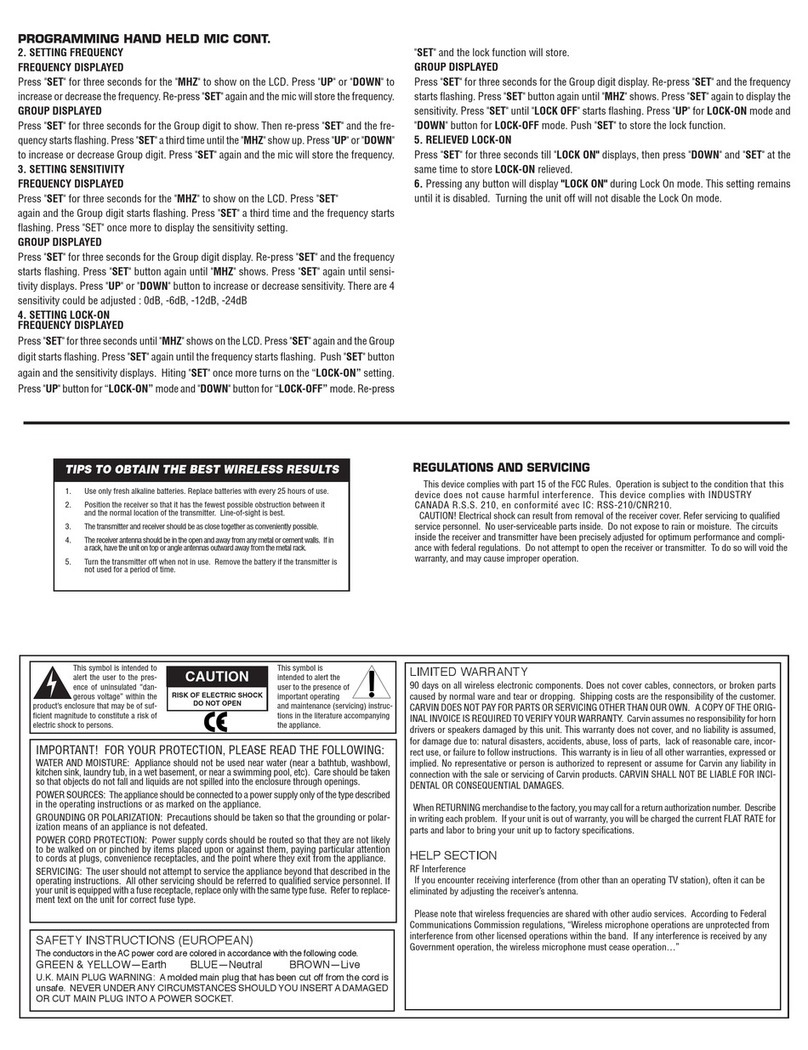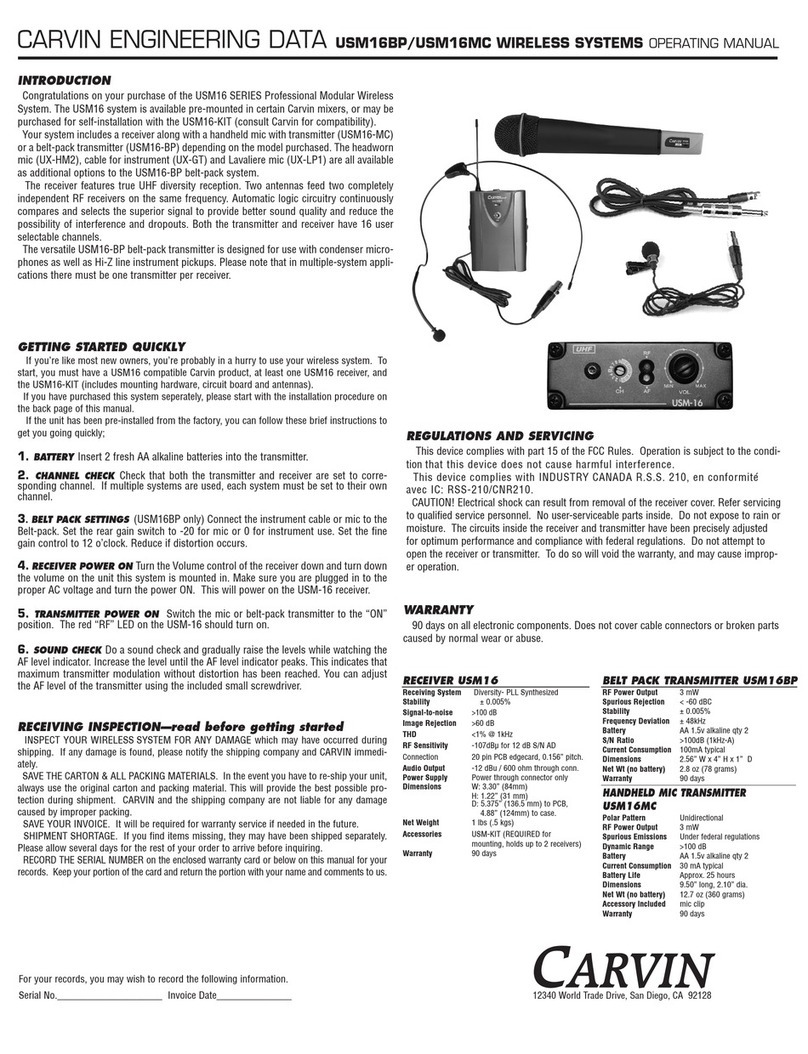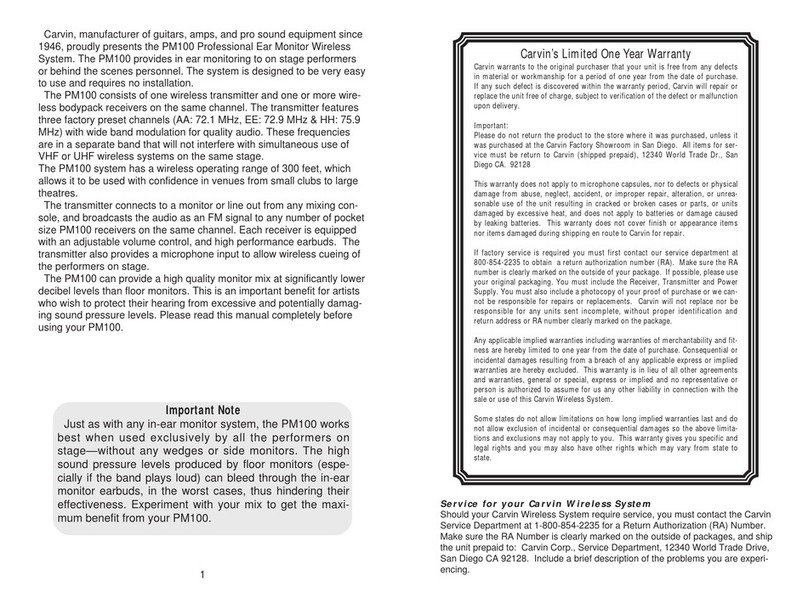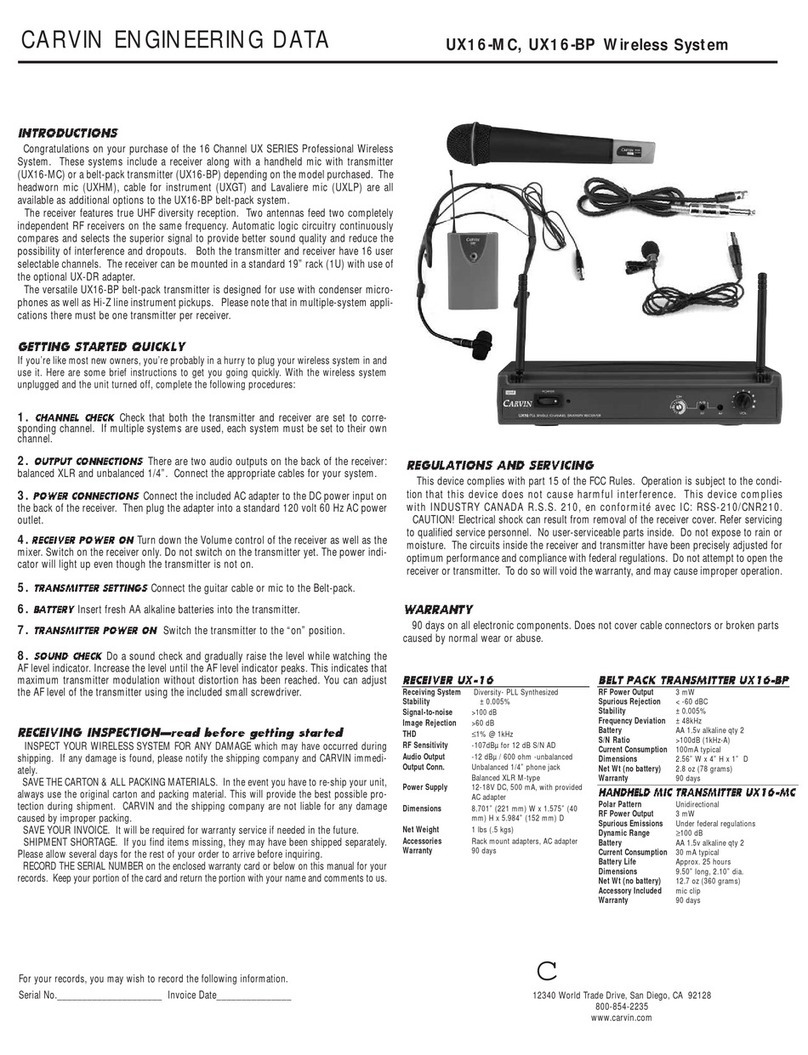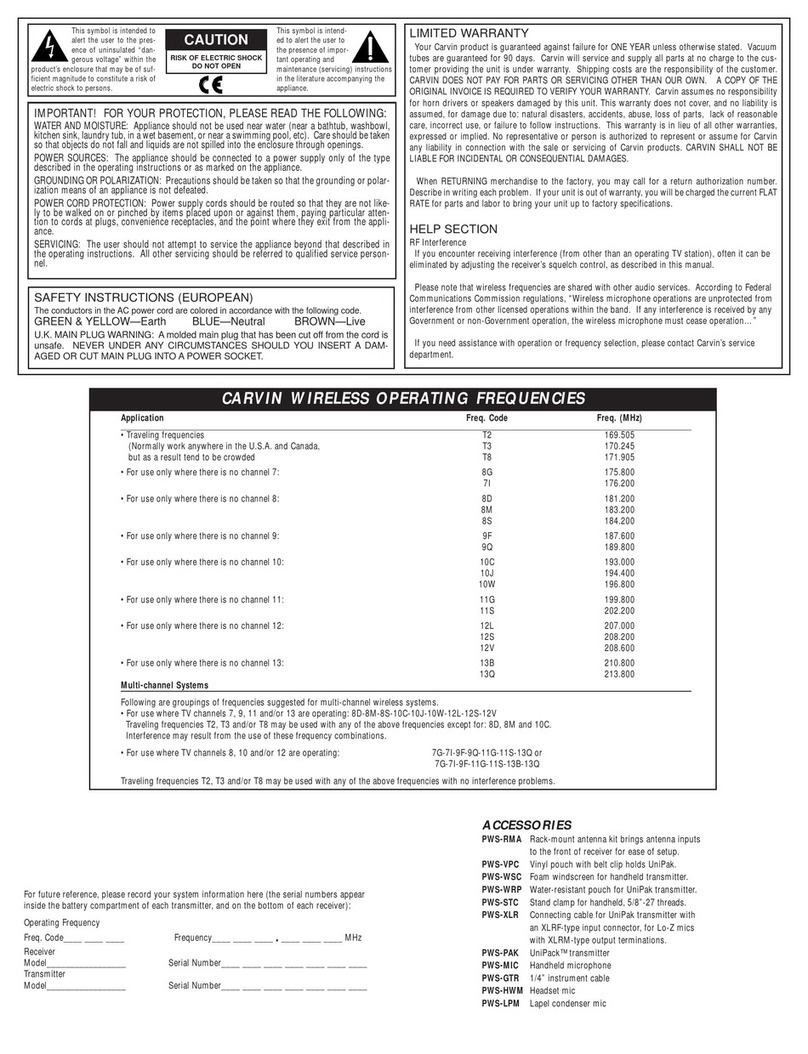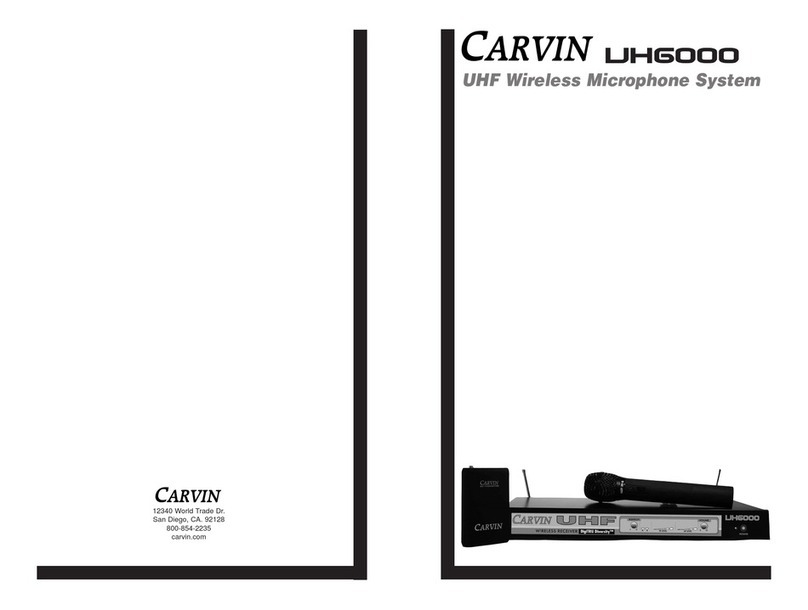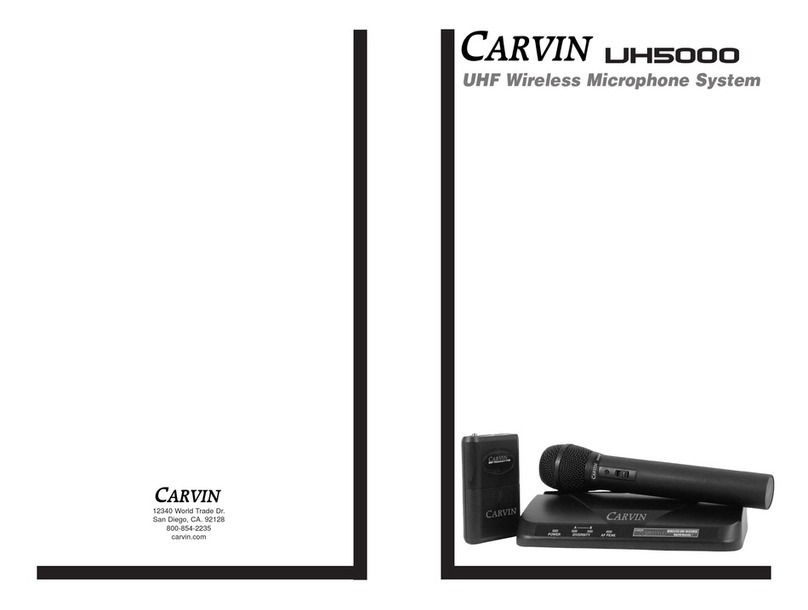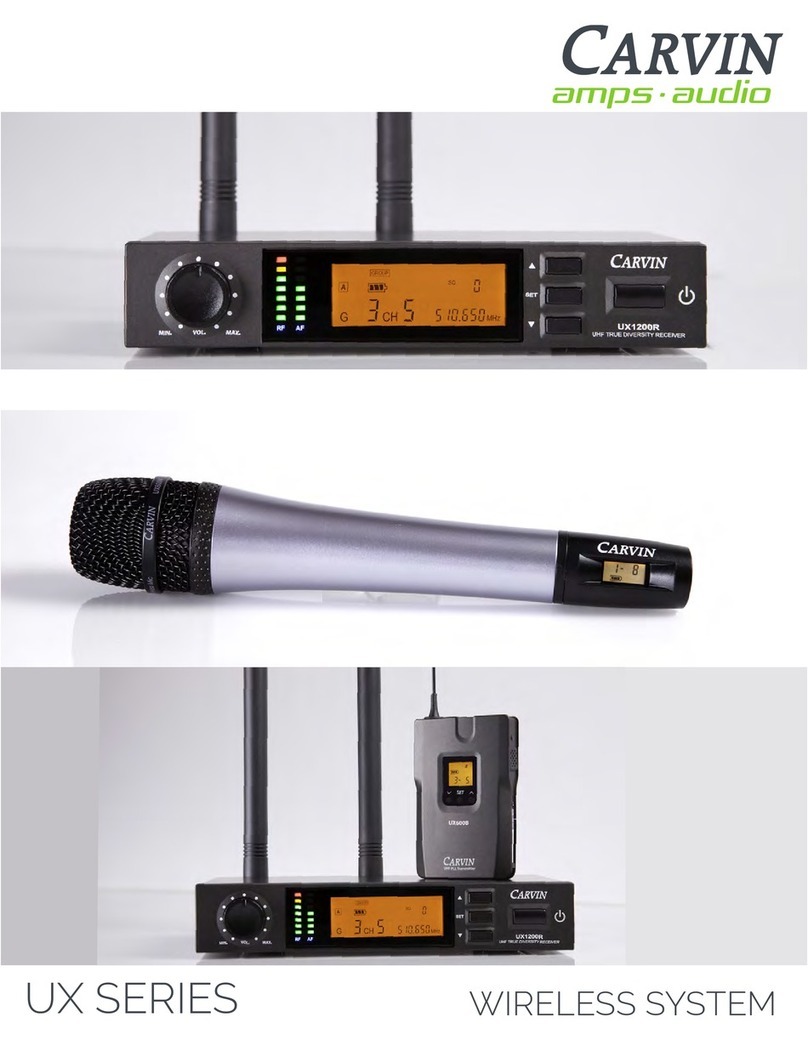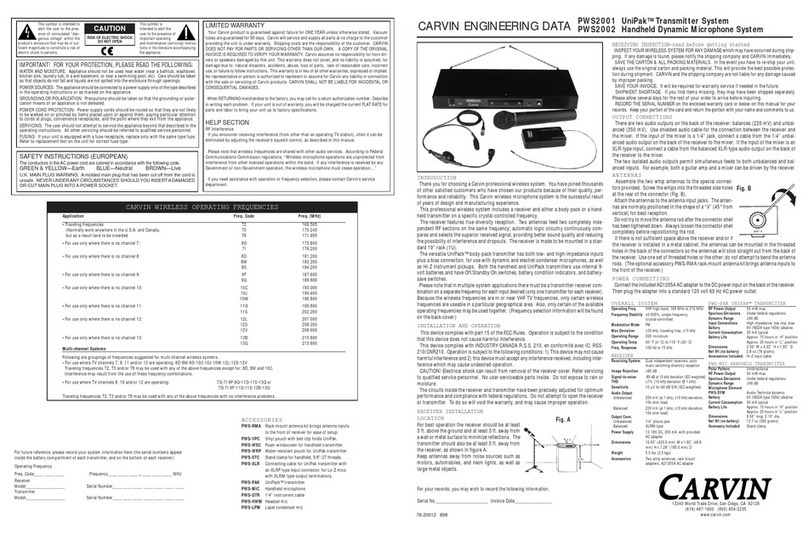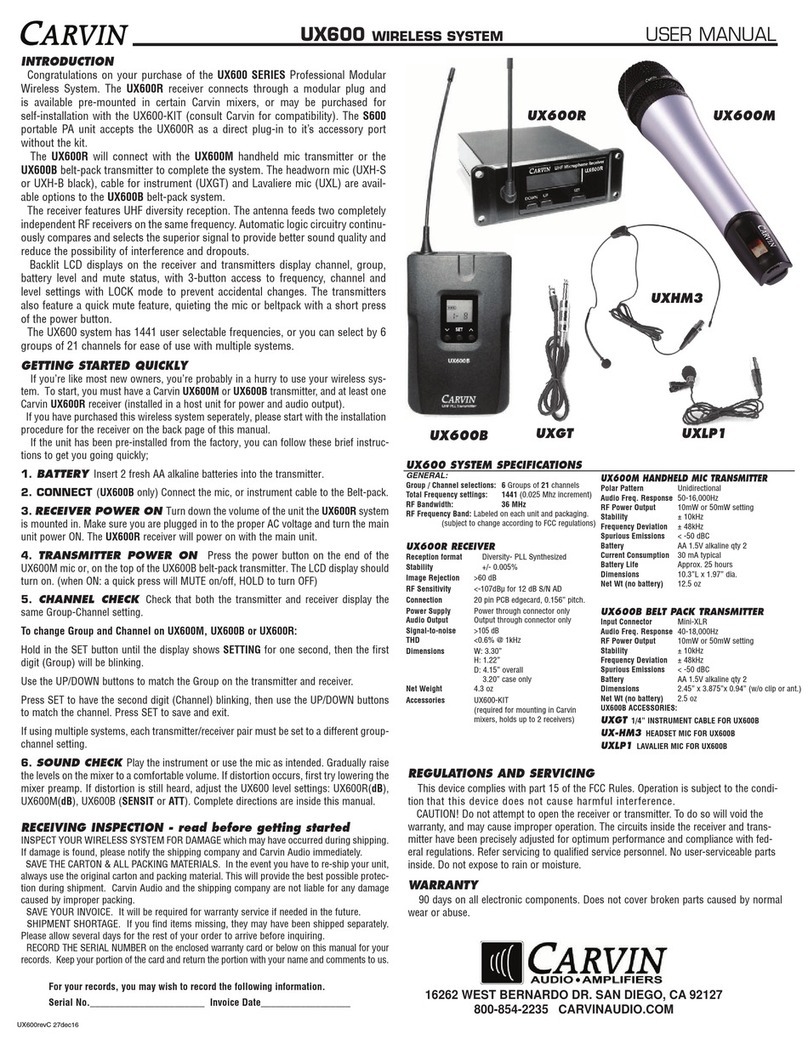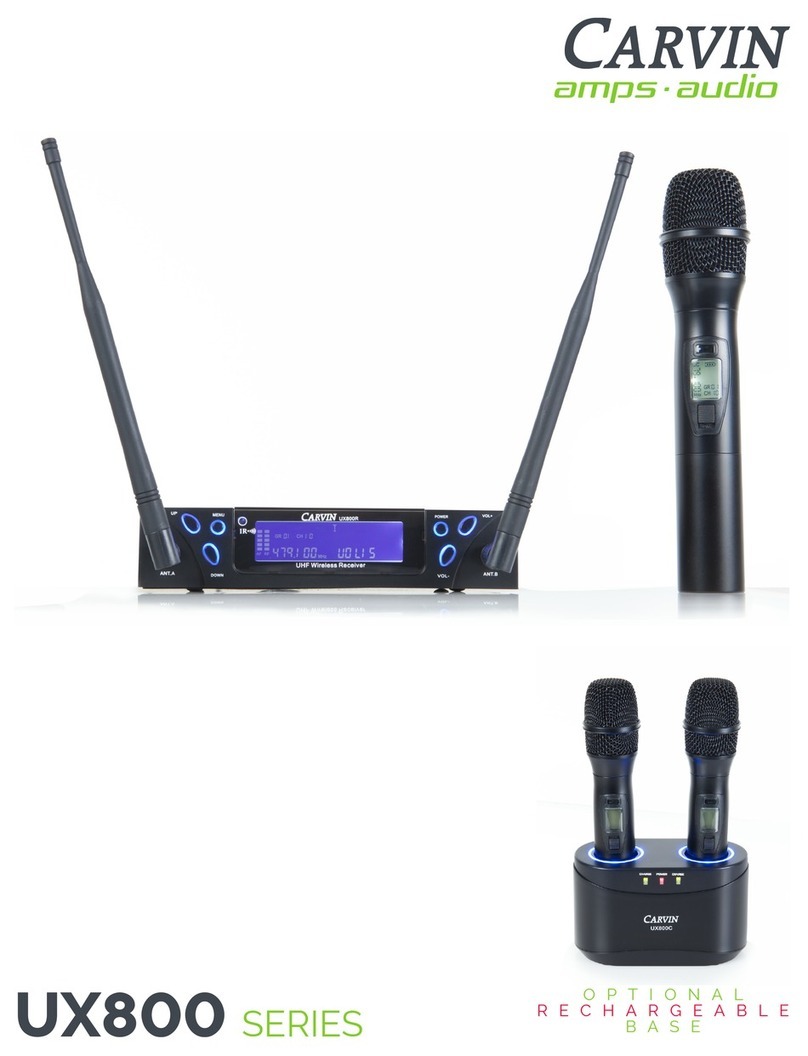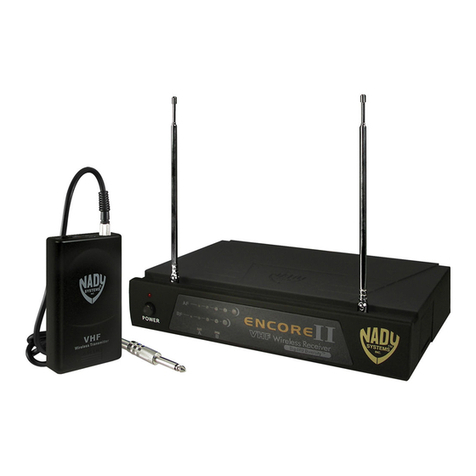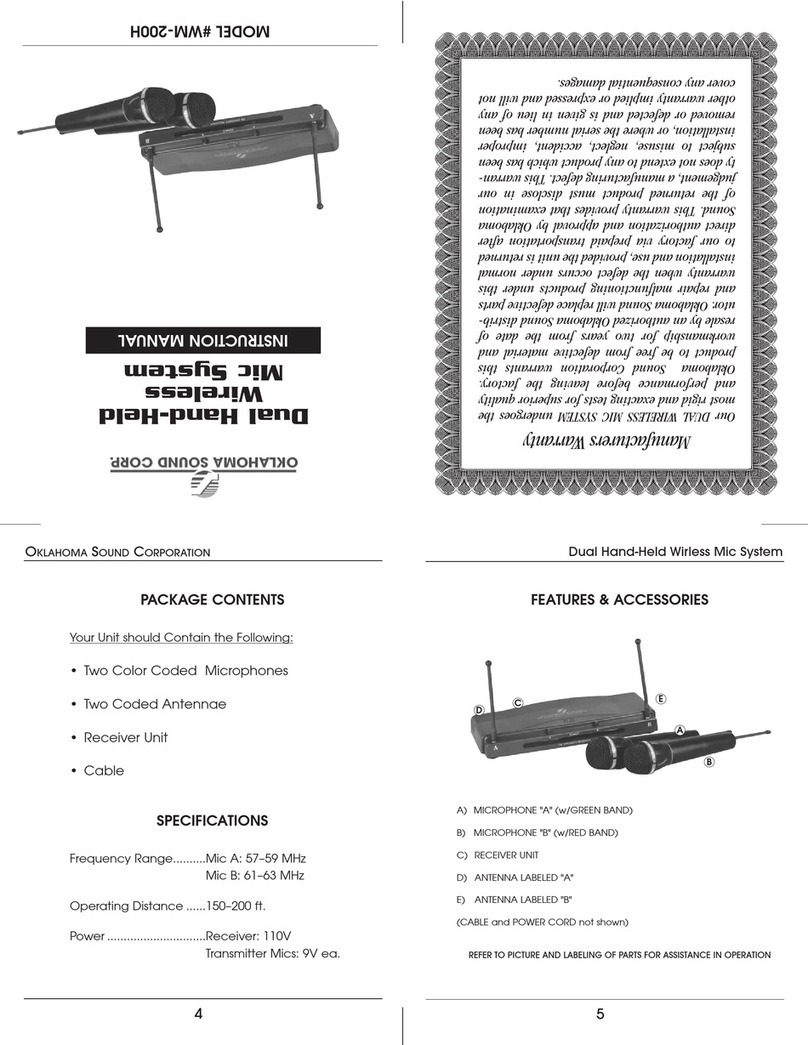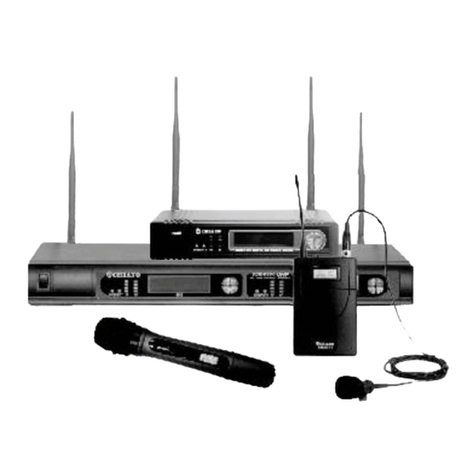OVERALL SYSTEM
Operating Freq. - 794.90 - 0811.00
Frequency Stability ±0.005%
Modulation Mode FM(F3E)
Max Deviation ±40 kHz
Operating Range 500’ line of site
Operating Temp 40° F (4° C) to 110° F (43° C)
Freq. Response 50 Hz to 12 kHz ±3dB
RECEIVER
Receiving System Quartz controlled fixed frequency
Image Rejection ≥80 dB
Signal-to-noise
.90 dB
THD ≤1%
Sensitivity 3 µV for 20 dB sinad
Audio Output
Unbalanced 750 mV / 5K ohm
Balanced 56 mV / 600 ohm
Output Conn.
Unbalanced 1/4” phone jack
Balanced XLR M-type
Power Supply 15V DC, 400 mA, with provided
AC adapter–center positive
Dimensions 16.93” (430.0 mm) W x 1.92” (48.8
mm) H x 7.28” (185.0 mm) D
Weight 5.5 lbs (2.5 kgs)
Accessories Two antennas, rack mount
adapters, AC adapter
INTRODUCTIONS
Congratulations on your purchase of the U7000 and U7500 Professional Wireless
System. These systems include a receiver and either a Lavaliere mic, a handheld mic with
transmitter, a headworn mic, or a body-pack transmitter for guitar,.
The receiver features true UHF diversity reception. Two antennas feed two completely
independent RF sections on the same frequency. Automatic logic circuitry continuously
compares and selects the superior received signal providing better sound quality and
reducing the possibility of interference and dropouts. Both receivers are made to be
mounted in a standard 19” rack (1U).
The versatile body-pack transmitter is designed for use with condenser microphones as
well as Hi-Z instrument pickups. Both the handheld and body-pack transmitters use inter-
nal antennae.
Please note that in multiple-system applications there must be a transmitter-receiver
combination on a separate frequency for each input desired (one transmitter per receiver).
BELT PACK TRANSMITTER
RF Power Output 3 mW
Spurious Emissions Under federal regulations
Dynamic Range ≥100 dB
Input Connections High impedance, low imp, bias
Battery 9V (NEDA type 1604) alkaline
Current Consumption 40 mA typical
Battery Life Approx. 20 hours
Dimensions 2.56” W x 4.33” H x 1.00” D
Net Wt (no battery) 2.8 oz (78 grams)
HANDHELD MIC TRANSMITTER
Polar Pattern Unidirectional
RF Power Output 3 mW
Spurious Emissions Under federal regulations
Dynamic Range ≥100 dB
Microphone Element
Battery 9V (NEDA type 1604) alkaline
Current Consumption 30 mA typical
Battery Life Approx. 20 hours
Dimensions 9.50” long, 2.10” dia.
Net Wt (no battery) 12.7 oz (360 grams)
Accessory Included mic clip
76-20012 0203
12340 World Trade Drive, San Diego, CA 92128
800-854-2235
www.carvin.com
GETTING STARTED QUICKLY
If you’re like most new owners, you’re probably in a hurry to plug your wireless system in and
use it. Here are some brief instructions to get you going quickly. With the wireless system
unplugged and the unit turned off, complete the following procedures:
1. ANTENNAS
Assemble the two antennas to the BNC connectors. For the U7000 the
BNC connectors are located on the front. For the U7500, the BNC connectors are locat-
ed on the rear. For rackmount installation of the U7500, the extension cables provided
bring the antenna inputs to the front of the receiver for mounting.
2. FREQUENCY CHECK
Check the frequency of the system against the chart on the
back page to ensure you have the proper frequency for your area. The frequency is
marked on the back panel or bottom of the receiver.
3. OUTPUT CONNECTIONS
There are two audio outputs on the back of the receiver:
balanced XLR and unbalanced 1/4”. Connect the appropriate cables for your system.
4. POWER CONNECTIONS
Connect the included AC adapter to the DC power input on
the back of the receiver. Then plug the adapter into a standard 120 volt 60 Hz AC power
outlet.
5. RECEIVER POWER ON
Turn down the Level control of the receiver as well as the
mixer. Switch on the receiver only. Do not switch on the transmitter yet. The power indi-
cator will light up even though the transmitter is not on. With U7000 one of the diversi-
ty indicator LEDs (A or B) will also light up.
6. TRANSMITTER SETTINGS
Slide the battery cover off of the transmitter and adjust
the input switch to the appropriate setting; 1=Instrument, 2=headmic, 3=lav mic.
7. BATTERY SELECTION
Insert a fresh 9-volt alkaline battery, observing the correct
polarity. Reinstall the battery cover.
8. TRANSMITTER POWER ON
The transmitter has a 3-position power switch; “Off”,
“Stand-by”, and “On”. Switch the transmitter to the “on” position.
9. SOUND CHECK
Do a sound check and gradually raise the level while watching the
AF level indicator. Increase the level until the AF level indicator peaks. This indicates that
maximum transmitter modulation without significant distortion has been reached.
10. SQUELCH
To eliminate unwanted background RF noise adjust the squelch control.
Hopefully, this will help get you started. Have fun with your new U7000/U7500 wireless
system.
RECEIVING INSPECTION—read before getting started
INSPECT YOUR WIRELESS SYSTEM FOR ANY DAMAGE which may have occurred during
shipping. If any damage is found, please notify the shipping company and CARVIN immedi-
ately.
SAVE THE CARTON & ALL PACKING MATERIALS. In the event you have to re-ship your unit,
always use the original carton and packing material. This will provide the best possible pro-
tection during shipment. CARVIN and the shipping company are not liable for any damage
caused by improper packing.
SAVE YOUR INVOICE. It will be required for warranty service if needed in the future.
SHIPMENT SHORTAGE. If you find items missing, they may have been shipped separately.
Please allow several days for the rest of your order to arrive before inquiring.
RECORD THE SERIAL NUMBER on the enclosed warranty card or below on this manual for your
records. Keep your portion of the card and return the portion with your name and comments to us.
U7000/U7500 Wireless System
For your records, you may wish to record the following information.
Serial No._____________________ Invoice Date_______________
REGULATIONS AND SERVICING
This device complies with part 15 of the FCC Rules. Operation is subject to the condi-
tion that this device does not cause harmful interference.
This device complies with INDUSTRY CANADA R.S.S. 210, en conformite´ avec IC: RSS-
210/CNR210. Operation is subject to the following conditions: 1) This device may not
cause harmful interference and 2) this device must accept any interference received,
including interference which may cause undesired operation.
CAUTION! Electrical shock can result from removal of the receiver cover. Refer servicing
to qualified service personnel. No user-serviceable parts inside. Do not expose to rain or
moisture.
The circuits inside the receiver and transmitter have been precisely adjusted for optimum
performance and compliance with federal regulations. Do not attempt to open the receiv-
er or transmitter. To do so will void the warranty, and may cause improper operation.
CARVIN ENGINEERING DATA
c
WARRANTY
1 year on all electronic components. Does not cover cable connectors or broken parts
caused by normal wear or replacement part abuse.
U7500
U7000
